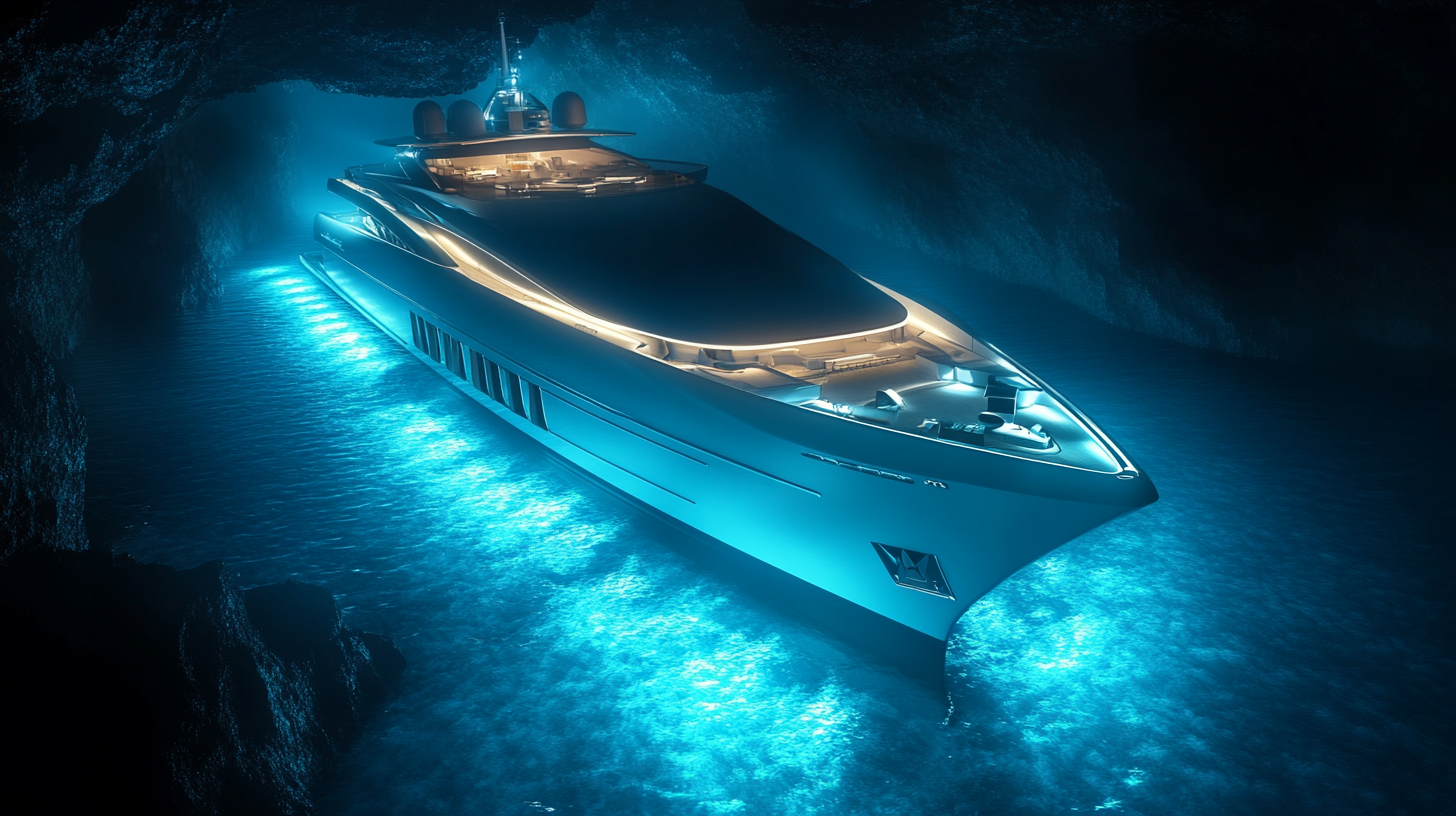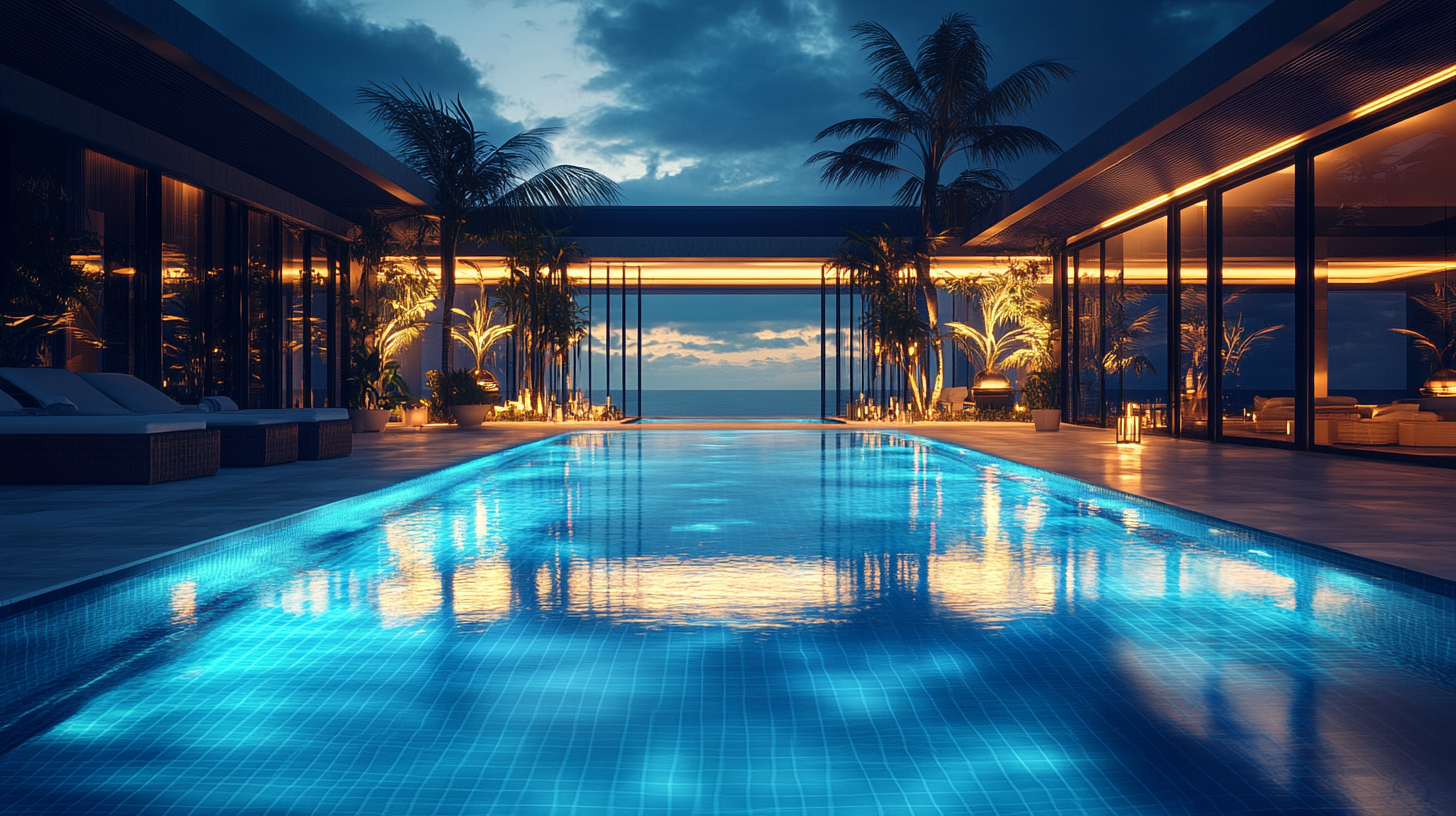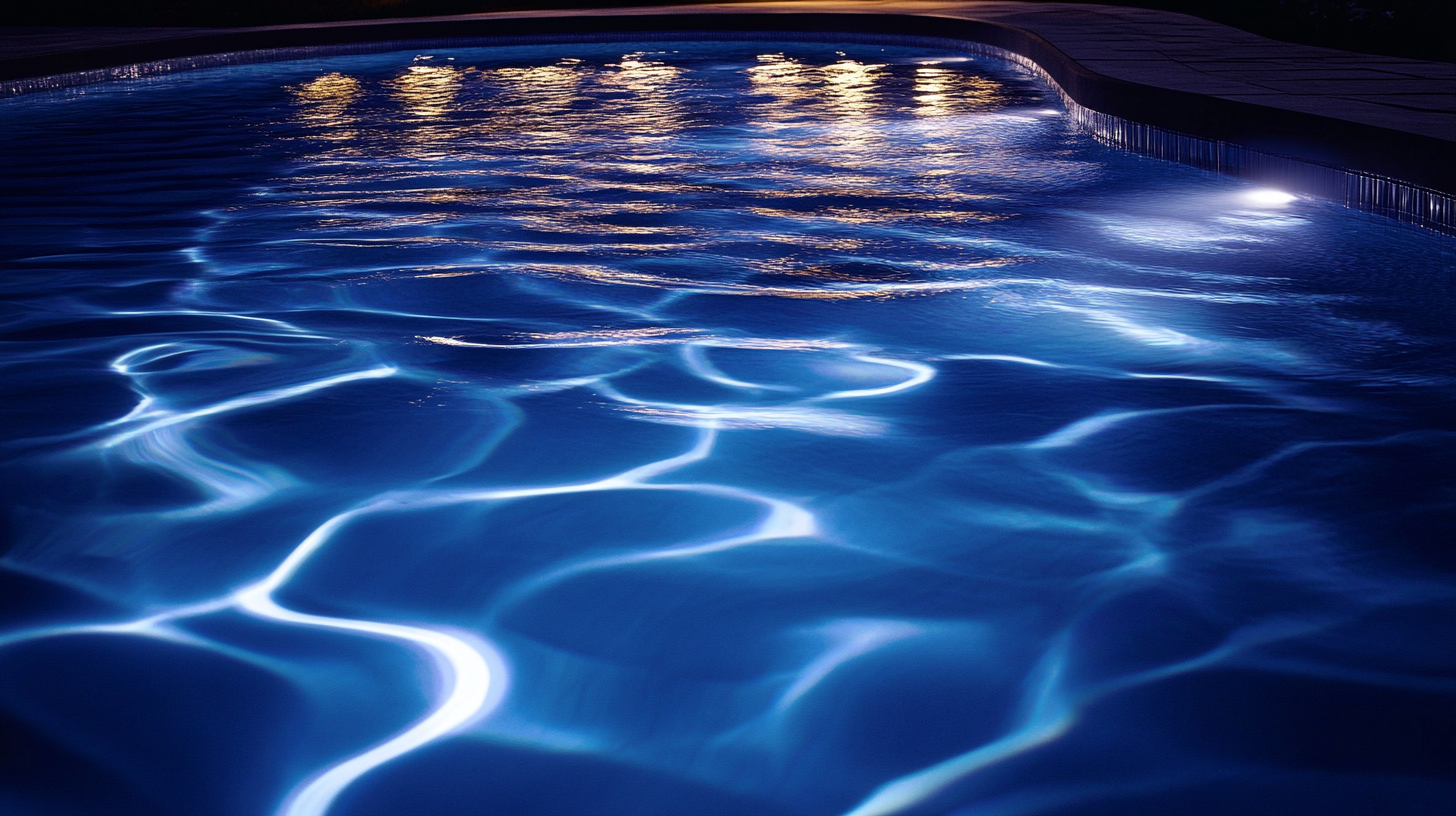How to choose the right underwater boat lights for your vessel
When it comes to selecting the perfect underwater lights for your vessel, the first step is understanding the variety of options available. Underwater lighting is more than just an accessory—it can significantly enhance both the safety and aesthetic appeal of your boat. Whether you’re cruising through serene waters or engaging in night-time fishing, different lights can serve various purposes.
There are generally three main types of underwater lights to consider: surface-mounted, thru-hull, and fully integrated lights. Surface-mounted lights are perhaps the easiest to install, as they can be attached directly to the hull of your vessel with minimal effort. They are ideal for boaters looking for a relatively simple and flexible solution, but they may not offer the same level of durability as other options.
For those seeking a more permanent and durable solution, thru-hull lights could be the right choice. These lights are installed directly into the hull of the boat, creating a seamless underwater lighting experience. Thru-hull lights offer excellent illumination and are typically more robust, making them a popular choice for larger vessels that require long-term reliability.
Finally, fully integrated lights are often incorporated into other marine systems, such as trim tabs or engine brackets. They offer a clean look and minimal interference with your vessel’s structure, but they might require more complex installation and integration with existing systems.
Choosing lights that are best suited for your vessel can significantly impact your overall boating experience. Whether you favor a straightforward setup or a more advanced system, there’s an option out there tailored to your specific needs and preferences. Make sure to consider factors like your boating environment, the size of your vessel, and how often you plan to use the lights, as these will guide you in selecting the type of underwater lights that’s best for your unique situation.
Considering brightness and color options
Once you’ve identified the type of underwater lights that best suit your vessel, the next step in your boating guide is to consider both brightness and color options, two factors that can dramatically impact your on-water experience. When choosing lights, you’ll want to balance functionality and aesthetic appeal, making it essential to understand what each combination of brightness and color can offer.
Brightness in underwater lighting is typically measured in lumens, with higher lumen counts indicating brighter lights. For those planning to use their lights primarily for visibility—whether for night cruising or ensuring safety during dockage—a high-lumen option is advisable. Bright lights can help illuminate the water below and around your vessel, making it easier to navigate or spot marine life. However, higher lumens may also draw more power, so it’s essential to match the brightness level with your vessel-specific power capacity to avoid draining your battery.
On the other hand, if your focus is more on creating ambiance or enhancing the aesthetic appeal of your boat, you might prefer lights with moderate brightness. Moderate-lumen lights can still provide sufficient illumination without overpowering the subtleties of your chosen color scheme. The right balance can set the perfect mood for a sunset cruise or a dockside party, subtly enhancing your experience without being too harsh on the eyes.
Color is another significant consideration, often dictated by both practical needs and personal taste. Many boaters opt for traditional white or blue hues, as these are not only visually appealing but also practical for most environmental conditions. White lights offer excellent brightness, making them ideal for functional lighting, while blue lights create a stunning underwater glow, beloved by many for its calming effect. However, white and blue aren’t your only choices—modern underwater lighting systems can offer a full spectrum of colors, from vibrant greens that attract fish to deep reds that provide a more subdued glow.
Some advanced underwater lighting options even come with color-changing capabilities, allowing you to switch between different colors depending on the occasion or mood. This flexibility can provide both practical illumination and an entertaining visual display, enhancing your vessel’s versatility. Whether you’re using your boat for fishing, entertaining, or a simple evening cruise, the ability to customize the lighting color adds an extra layer of enjoyment to your boating experience.
Ultimately, when it comes to selecting the best brightness and color options, the right choice will depend on how and where you use your boat, as well as your personal preferences. Aligning these factors with your vessel-specific needs can ensure that your underwater lighting not only enhances your boat’s safety and functionality but also adds a touch of style that’s visible even in the darkest waters.
Evaluating energy efficiency and power requirements
Once you’re satisfied with the brightness and color of your underwater lights, the next crucial step in your boating guide is to evaluate the power requirements and energy efficiency of your chosen lights. This not only affects your boat’s electrical system but also directly influences the longevity and performance of the lighting itself over time. Because underwater lighting typically operates at night, when your vessel’s engine might not be running, choosing lights with the right energy efficiency is vital to avoiding undue strain on your battery.
Energy efficiency in underwater lights is often determined by the type of bulb they use. LED lights have become the preferred choice for many boaters due to their exceptional energy efficiency and low power consumption. LED bulbs consume far less power than traditional halogen or incandescent bulbs while offering the same or even greater levels of brightness. This makes them particularly well-suited for vessels that have limited power capacity, allowing you to maximize illumination without draining your battery reserves. Additionally, LEDs have a longer lifespan, meaning you’ll spend less time and money on replacements, letting you focus more on enjoying your time on the water.
It’s also important to consider the power rating of the lights you choose. Power ratings are typically measured in watts, and while higher wattage usually means brighter lights, it also means more power draw. But don’t let wattage numbers mislead you—thanks to advancements in technology, you can find LED underwater lights that offer high lumen output at a fraction of the wattage previously required. For example, an LED light that produces 1,200 lumens might use only 12 watts, whereas an older halogen light with the same brightness could consume up to 50 watts or more.
In addition to energy consumption and wattage, your vessel’s electrical system must be up to the task of powering your selected underwater lights. It’s essential to verify that your boat’s battery system and alternator can handle the additional load. If you’re concerned about overloading your system, you might want to consider installing a dedicated battery for your underwater lighting. This can provide extra reliability and ensure that your primary battery, used for essential functions like starting the engine, remains unaffected.
Another aspect to examine is the voltage requirements of the lights. Most marine LED lights are designed to run on 12V or 24V systems, which are common in boats. However, some lights might require higher or specialized voltages, especially if they offer advanced features like color-changing modes or remote control operation. Be sure to check your vessel’s compatibility with your chosen lights to avoid any potential electrical issues.
Remember that energy efficiency isn’t just about conserving power—it’s also about optimizing the performance and longevity of your lighting system. Properly balancing power requirements with the battery capacity of your vessel will not only provide reliable illumination throughout your voyages but also protect your electrical system from premature wear. By carefully selecting energy-efficient lights, you ensure that your underwater lighting not only meets your needs but also enhances your entire boating experience.
Selecting the proper mounting location
When it comes to optimizing the performance and aesthetic appeal of your underwater boat lights, the location where the lights are mounted plays a crucial role. Selecting the proper mounting position will ensure that your underwater lighting provides optimal illumination while minimizing any potential interference with other onboard equipment or water dynamics. The position of your lights not only influences the overall look of your vessel at night but also impacts the practical functionality of the lights themselves.
The first factor to consider in mounting your underwater lights is the depth at which they will be installed. Lights mounted too close to the waterline can become exposed during rough seas or when the boat is at high speeds, potentially causing damage to the lights or creating an uneven lighting effect. On the other hand, mounting the lights too deep can reduce their effectiveness, as the water’s opacity increases with depth, diminishing the lights’ ability to illuminate the area around the vessel. Ideally, lights should be placed about 6 to 12 inches below the waterline, with the specific depth varying based on your boat’s design and the type of lights you’ve chosen.
The second consideration is the horizontal placement of the lights on your vessel’s hull. Most boaters prefer to position their underwater lights symmetrically along the stern, ensuring a balanced and aesthetically pleasing light distribution. For example, on boats with wider sterns, multiple lights can be spaced evenly across the transom to create a broader light spread. This is particularly beneficial for vessels used in fishing or nighttime entertaining, as the increased light distribution enhances visibility and creates a more inviting atmosphere.
Additionally, it’s essential to be aware of any potential obstacles or structural components that could block the light or create undesirable shadows. Features such as trim tabs, strakes, or outboard engines can interfere with the lights’ beam, casting shadows that may reduce the overall effectiveness of your underwater lighting. When choosing lights for your boat, especially on vessels with complex transom designs, you may need to opt for either surface-mounted or thru-hull lights that can be positioned between or around these obstacles. A careful evaluation of your vessel-specific layout will help you select the right mounting locations for maximum efficiency.
Boat owners should also consider the angle at which the lights will be installed. For boats that frequently dock in shallow waters, angling the lights slightly downward can help prevent glare from reflecting off the water’s surface, improving underwater visibility. However, if you’re looking to create a broader light spread across the water, a straighter, more horizontal mounting angle is recommended. The angle can significantly affect how the light interacts with the water, influencing both the intensity and direction of the illumination.
Finally, it’s vital to ensure that the mounting location is accessible for maintenance and any potential future repairs. While a lower positioning on the hull may offer better light dispersion, it could also make the lights more susceptible to marine growth or damage from water debris. Mounting the lights in an easily reachable location allows for quicker and more straightforward cleaning, inspection, or replacement when necessary. Regular maintenance is key to preserving the durability and performance of your underwater lighting, so accessibility should not be overlooked.
Select your mounting locations wisely by considering all these factors, as they will help to maximize both the functionality and aesthetic appeal of your underwater lights. Properly installed, these lights can enhance your vessel’s look, increase safety during night-time operations, and add an extra layer of enjoyment to your boating experience.
Understanding durability and maintenance needs
When you’re in the process of choosing lights for your boat, understanding durability and maintenance needs is an essential part of ensuring that your investment stands the test of time. Given that underwater lighting is subjected to some of the harshest conditions, including prolonged exposure to saltwater, physical impacts with debris, and the constant wear and tear from marine life, it’s crucial to select lights that are built to last. This aspect of your boating guide is all about making smart choices that protect both your boat and your wallet from unforeseen issues down the line.
One of the primary factors in the durability of underwater lights is the materials used in their construction. Marine-grade materials are a must; stainless steel, bronze, and high-quality plastics like polycarbonate are commonly deployed and offer excellent resistance against corrosion. Stainless steel is often favored for its balance between strength and aesthetic appeal, making it a durable option that also adds a touch of elegance to your vessel’s overall look. The durability of these materials helps to ensure that the lights maintain their integrity even after years of submersion in saltwater, where lesser metals could quickly corrode or degrade.
Another important consideration is the ability of the lights to resist physical damage. Even the most rugged waters can inflict bumps and scrapes on your vessel’s underwater components, so it’s essential to choose lights designed to withstand such impacts. Many high-end underwater lights are built with shock-resistant casings that can absorb the impact of floating debris or unexpected underwater obstacles. Additionally, thicker lenses made from materials like impact-resistant tempered glass or polycarbonate can further protect the lights from physical damage. This resilience not only prolongs the life of your lighting system but also ensures continuous operation without costly interruptions for repairs or replacements.
Durability doesn’t just stop at materials; the construction and sealing of the lights are equally critical. Proper sealing is vital to prevent water ingress, the primary culprit behind electrical failures in underwater lights. Look for lights that are rated as fully waterproof, often indicated by an IP68 rating, which means they are fully sealed and capable of operating underwater for extended periods. This level of sealing helps keep water, salt, and moisture from penetrating the fixture, safeguarding the electrical components and ensuring long-term reliable performance.
In addition to choosing lights with durable construction, it’s also important to consider the maintenance requirements of your underwater lighting system. Marine environments are notorious for encouraging the rapid growth of algae, barnacles, and other marine life, which can quickly accumulate on exposed lights. This marine growth not only diminishes the brightness of your lights but can also interfere with their performance by creating excessive heat build-up. To combat this, many manufacturers offer lights with built-in anti-growth features such as special coatings or extra-smooth finishes that make it harder for organisms to attach.
However, even the best preventive measures can’t eliminate the need for regular maintenance entirely. It’s advisable to schedule routine cleaning of your underwater lights, which can often be done during an annual service or whenever your boat is hauled out of the water. In situations where cleaning in the water is required, make sure the lights you select are accessible from the waterline or equipped with easy-to-remove lenses. This ensures that you can quickly clean off any marine growth or inspect the lights for signs of wear without the need for specialized tools or lengthy procedures.
If you find yourself frequently in waters heavily populated by marine life, consider installing lights with replaceable lenses or modular components. These systems allow parts of the light to be swapped out without having to replace the entire fixture, significantly lowering long-term maintenance costs. Again, this is where the location and mounting method come into play—if the lights are designed for ease of access, ongoing maintenance becomes far less of a chore.
Finally, when considering the maintenance aspects, don’t overlook the importance of quality warranty coverage and customer support from the manufacturer. Even the most meticulously maintained lights can encounter issues, and having a solid warranty ensures that you’re covered in case something goes wrong. Reputable manufacturers will often provide warranties of up to three years or more, offering you peace of mind that they stand behind the durability of their products. Furthermore, accessible and responsive customer service can be invaluable when quick replacements or repairs are needed, enabling you to keep your boat in the water rather than sidelined for extended periods.
By thoroughly understanding the durability and maintenance needs of your underwater lighting, you can make an informed decision that enhances both the lifespan and performance of your selected lights. Balancing these practical considerations with your vessel-specific needs ensures that your lights not only look good but are also built to withstand the demanding conditions of marine environments. The result is a well-lit vessel that continues to shine brightly, season after season, enhancing every aspect of your boating experience.


